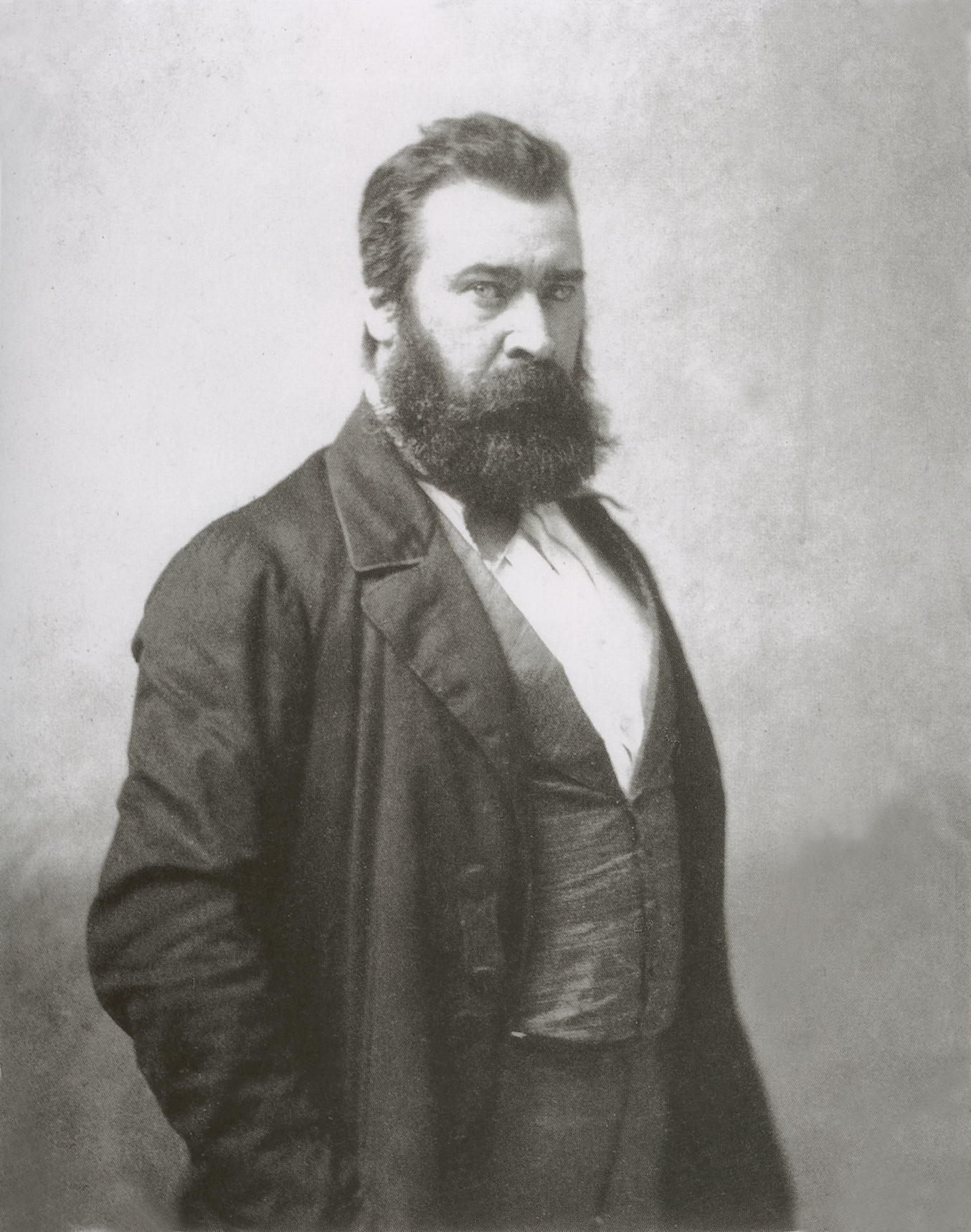In his letter to fr:Alfred_Sensier, Barbizon, February 1850; as quoted in Prints & drawings Europe 1500–1900 - catalogue for the exhibition 'European prints & drawings: 1500 - 1900', ed. Peter Raissis; Art Gallery of New South Wales, Sydney 2014, pp. 136-137
1835 - 1850
Jean-François Millet: Idézetek angolul
Quote from his letter, March 1859; as quoted by Arthur Hoeber in The Barbizon Painters – being the story of the Men of thirty – associate of the National Academy of Design; publishers, Frederick A. Stokes Company, New York 1915, p. 53
his now famous picture 'Death and the Woodcutter' https://upload.wikimedia.org/wikipedia/commons/d/dd/Death-and-the-woodcutter-jean-francois-millet3.jpg, had been rejected at the Salon, and the important and conservative journal 'Gazette des Beaux Arts' was most indignant. The well known Hedouin engraved this work.
1851 - 1870
Quote of Millet in his letter of 23 March 1851; as quoted by Julia Cartwright in Jean Francois Millet, his Life and Letters, Swan Sonnenschein en Co, Lim. London / The Macmillian Company, New York; second edition, September 1902, p. 112
the most famous painting of Millet 'The Sower', reviewed in an article then by Gautier, was exhibited for the first time in 'The Salon' of Paris, at the End of 1850
1851 - 1870
a remark to his friend Louis Marolle in Paris c. 1839; as quoted by Julia Cartwright in Jean Francois Millet, his Life and Letters https://archive.org/stream/jeanfrancoismill00cart#page/n5/mode/2up, Swan Sonnenschein en Co, Lim. London / The Macmillian Company, New York; second edition, September 1902, p. 60
Millet had little sympathy with the French poet Alfred de Musset and criticized the tendencies of his poetry severely.
1835 - 1850
Quote, c. 1870; as cited by Julia Cartwright in Jean Francois Millet, his Life and Letters, Swan Sonnenschein en Co, Lim. London / The Macmillian Company, New York; second edition, September 1902, p. 12
taken from Millet's youth-memories, he wrote down on request of his friend and later biographer Alfred Sensier, https://fr.wikipedia.org/wiki/Alfred_Sensier]
1870 - 1875
Millet is describing his development as artist to his friend and later biographer fr:Alfred_Sensier
Forrás: Jean-Francois Millet – Peasant and Painter, 1881, p. 44
Quote c. 1870; cited by Julia Cartwright in Jean Francois Millet, his Life and Letters, Swan Sonnenschein en Co, Lim. London / The Macmillian Company, New York; second edition, September 1902, p. 22
taken from Millet's youth-memories, about the years he lived as an boy close to the wild coast of Normandy, written down on request of his friend and later biographer Alfred Sensier
1870 - 1875
Quote of Millet, c. 1839; as cited by biographer , in Jean-Francois Millet – Peasant and Painter, transl. Helena de Kay; publ. Macmillan and Co., London, 1881, p. 54
Boisseau criticized Millet on making his own plan; he was one of the master's pets of art-teacher Paul Delaroche in Paris, that time
1835 - 1850
Forrás: Jean-Francois Millet – Peasant and Painter, 1881, p. 46-49
Quote of Millet, in his letter from Barbizon, c. 1850 to fr:Alfred_Sensier in Paris; as cited by Arthur Hoeber in The Barbizon Painters – being the story of the Men of thirty https://ia902205.us.archive.org/30/items/barbizonpainters00hoeb/barbizonpainters00hoeb.pdf – associate of the National Academy of Design; publishers, Frederick A. Stokes Company, New York 1915, p. 38
In 1850 Millet entered into an arrangement with Alfred Sensier, who provided him with materials and money in return for drawings and paintings (source: Murphy, Alexandra R. Jean-François Millet. Museum of Fine Arts, Boston, 1984, p. xix), see: Wikipedia, Millet
1835 - 1850
Quote from Millet's first letter to fr:Alfred_Sensier, from Barbizon, 28 June 1849; as cited by Julia Cartwright in Jean Francois Millet, his Life and Letters, Swan Sonnenschein en Co, Lim. London / The Macmillian Company, New York; second edition, September 1902, p. 95
1835 - 1850
Quote from his letter, 1851; as quoted in Millet, by Romain Rolland, - translated from the French text of M. Romain Rolland by Miss Clementina Black; published: London, Duchworth & Co / New York, E. P. Dutton & Co, p. 11+12
1851 - 1870
